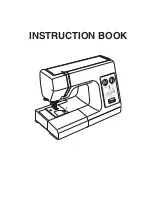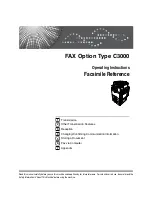
14
TIMING THE PULLER (CONT.)
and loosen. Continue to rotate the handwheel c A until screw (A)
is accessible and loosen. Hold the eccentric in this position and
rotate the handwheel until the needles reach the top of their
stroke. Push the eccentric against the thrust collar and tighten
screw (A). Rotate handwheel until screw (C) can be seen and
tighten.
SETTING THE PULLER STITCH LENGTH
The puller stitch length must be set so it maintains tension on the
fabric without stretching it. For example, if you desire 9 stitches
per inch (SPI) the feed dog travel should be set to produce 10 SPI
without the puller contacting the material. With the puller contact-
ing the material 9 SPI should be produced. if adjustment is
necessary remove the top right crank chamber oil cover and
loosen ball joint nut (A, Fig. 17). Move ball
joint (B) to the rear of driving shaft seg-
ment (C) to produce less SPI (a longer
stitch length) or move the ball joint to the
front to produce more SPI (a shorter stitch
length). Tighten nut (A) after each adjust-
ment and check for final desired stitch
length.
SETTING THE LOOPER THREAD
EYELET
Turn the handwheel in operating direction
until the needles are at their highest posi-
tion. Loosen screws (A, Fig. 18) and posi-
tion eyelet notch (B) so it will allow looper
throw-out fork (C) to pass over the notch
when looper throw-out plunger knob (D) is
pulled to the left, releasing the looper holder
for looper threading. When the needles are
at their lowest position looper throw-out
fork (C) should not pass the left side of
eyelet notch (B) if looper throw-out plunger
knob (D) is pulled to the left.


































